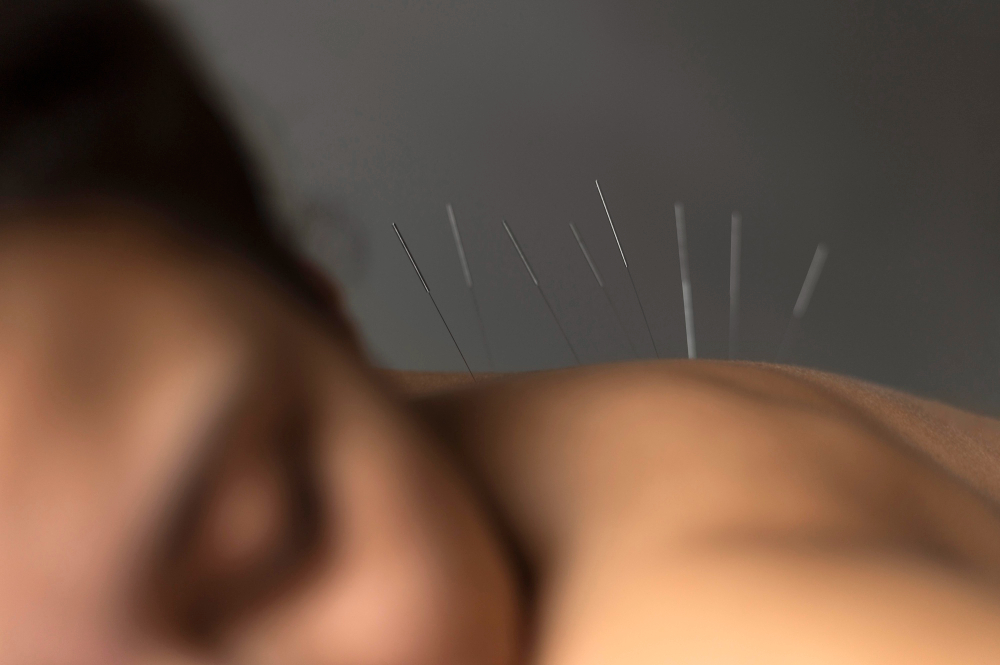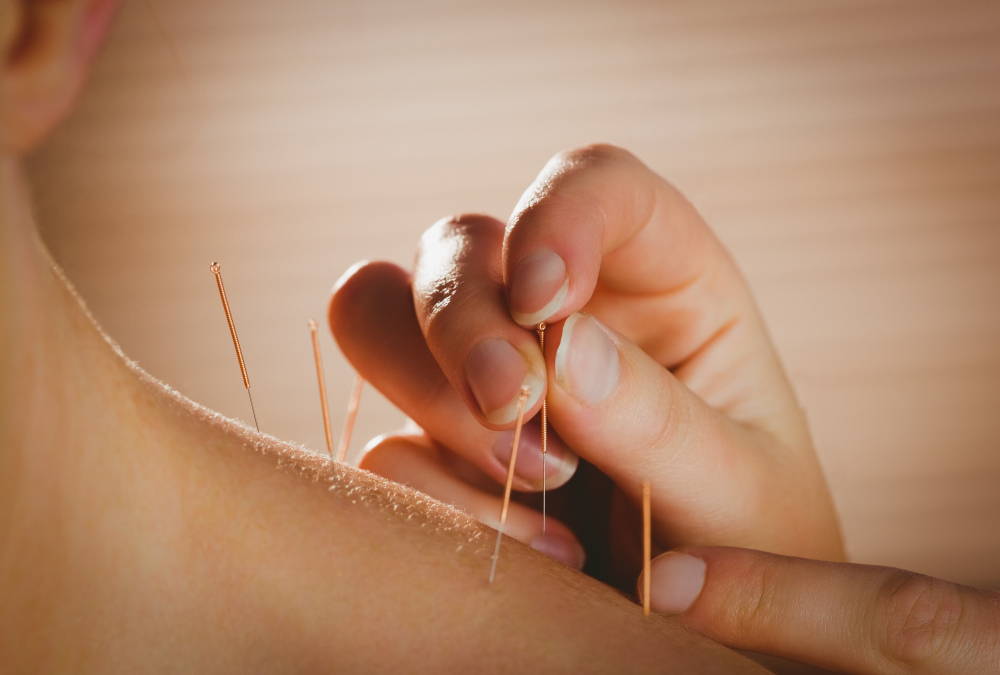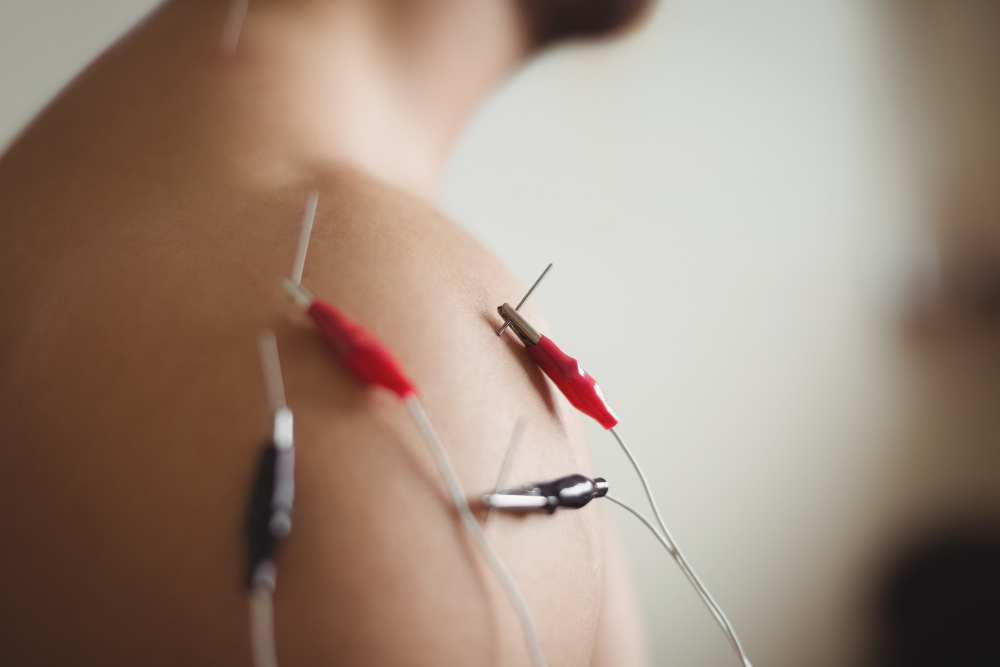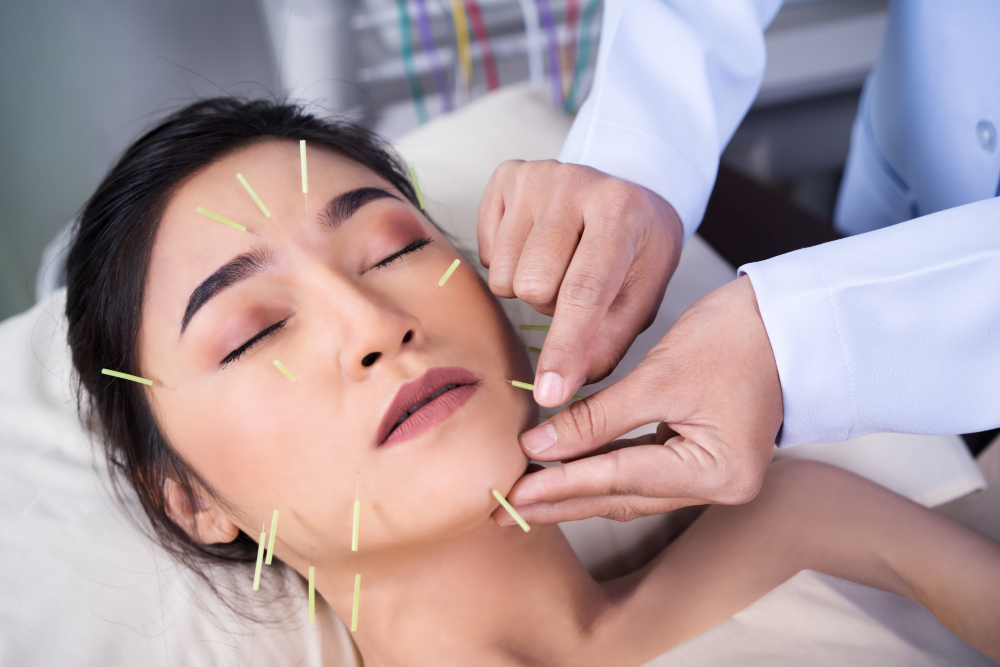Dry Needling

Dry needling, also known as trigger point dry needling, is a technique physical therapists and other healthcare providers use to treat myofascial pain. The term "dry" refers to the fact that the needle is solid and does not inject a solution or medication – it's the needle itself that is the therapy.
Trigger points, which are painful tight bands or knots in the muscle, are linked to myofascial pain. These trigger points are often felt under the skin and can be painful when touched or cause pain in other parts of the body.
During a dry needling procedure, a thin filiform needle is inserted into the skin and muscle directly at a myofascial trigger point. The needle is used to release the trigger point and relieve pain. The method can aid in easing muscle tension, encouraging healing, and enhancing range of motion.
Benefits
Dry needling is a physical therapy technique used to treat pain and movement impairments, often due to muscle tension or trigger points. Below mentioned are some potential benefits of dry needling.
- Pain Reduction: One of the primary reasons dry needling is used is to alleviate pain. By deactivating trigger points, dry needling can help reduce pain levels and improve function.
- Increased Range of Motion: By reducing muscle tension and pain, dry needling can help improve joint range of motion.
- Improved Muscle Function: Dry needling can help to normalize dysfunctions of the motor end plates, the sites at which nerve impulses are transmitted to muscles. This can help restore normal muscle function and improve strength and coordination.
- Faster Recovery Time: When used in conjunction with other physical therapy techniques, dry needling can help reduce recovery time for injuries.
- Reduced Need for Medication: For some patients, dry needling can help to reduce reliance on pain medications, including opioids.
- Management of Chronic Conditions: Dry needling can be an efficient treatment in the management of persistent musculoskeletal pain disorders.
- Relief from Headaches: In some cases, dry needling can help reduce tension headaches and migraines by targeting trigger points in the neck and upper back.
- Decreased Swelling or Stiffness: Dry needling can help decrease swelling and stiffness in affected areas, providing relief and improving mobility.

Dry needling techniques generally fall into two categories: superficial dry needling (SDN) and deep dry needling (DDN). Both techniques aim to release myofascial trigger points, but they differ in how deep the needle is inserted into the tissue.
- Superficial Dry Needling (SDN): In this technique, the needle is inserted into the skin and muscle just above the trigger point, but not into the trigger point itself. Superficial dry needling can be useful for patients who are new to dry needling, or for treating areas close to nerves or blood vessels.
- Deep Dry Needling (DDN): In deep dry needling, the needle is inserted directly into the myofascial trigger point. The needle may be moved up and down to elicit a local twitch response, which is a spinal cord reflex that can help disrupt the trigger point. Deep dry needling may be more effective for treating chronic or deep-seated trigger points, but it can also be more uncomfortable than superficial dry needling.
The choice of technique depends on the patient's condition and tolerance, the location and depth of the trigger points, and the practitioner's experience and judgment.

No doubt, dry needling has numerous positive effects. But there are some people and situations where treatment might not be advised. Some of those are mentioned below.
- People with Bleeding Disorders: Individuals with bleeding disorders or those who are on blood-thinning medications may be at a higher risk of bleeding or bruising from dry needling.
- Pregnant Women: While dry needling may be safe in certain cases during pregnancy, it's typically avoided, particularly in the low back or abdomen.
- People with Lymphedema: In people with lymphedema, particularly after lymph node removal, dry needling might potentially exacerbate the condition.
- People with Active Skin Infections: Dry needling should not be performed in areas with active skin infections, wounds, or burns due to the risk of spreading the infection.
- People with Severe Medical Conditions: Before receiving dry needling, patients with serious medical issues such as uncontrolled diabetes or heart disease should talk with their doctor about their condition.
- People with Allergies to Metal: While rare, if you have an allergy to the type of metal used in the needles, you should not undergo dry needling.
- Immunocompromised Individuals: Before attempting dry needling, people with weakened immune systems should speak with their doctor because they may be more susceptible to infection.

Side Effects
When carried out by a qualified healthcare practitioner, dry needling is mostly risk-free, although there are always potential hazards and negative effects. Here are some potential risks associated with dry needling:
- Bleeding & Bruising: As the technique involves inserting a needle into the skin, minor bleeding or bruising can occur at the site of needle insertion.
- Infection: Although rare, any procedure that involves piercing the skin can potentially lead to an infection. This risk is minimized by using sterile needles and following proper infection control procedures.
- Temporary Soreness or Pain: Following a dry needling session, you may experience temporary soreness or pain in the treated area. This typically resolves within a few days
- Fatigue: Some people report feeling tired or fatigued after a dry needling treatment.
- Fainting: Some people may feel faint or lightheaded during or after the procedure, particularly if they are nervous about needles.
- Nerve Damage: While extremely rare, there is a potential risk of nerve damage if a needle is incorrectly inserted too deeply.
- Pneumothorax: This is a rare but serious complication where the needle punctures a lung if dry needling is performed improperly on the chest or upper back areas.
- Emotional Reaction: Some people may have an emotional reaction (such as crying or feeling elated or anxious) after the procedure.

